Note: You can also find the full deck on SlideShare – although it’s easier to read the full transcript here on our blog.
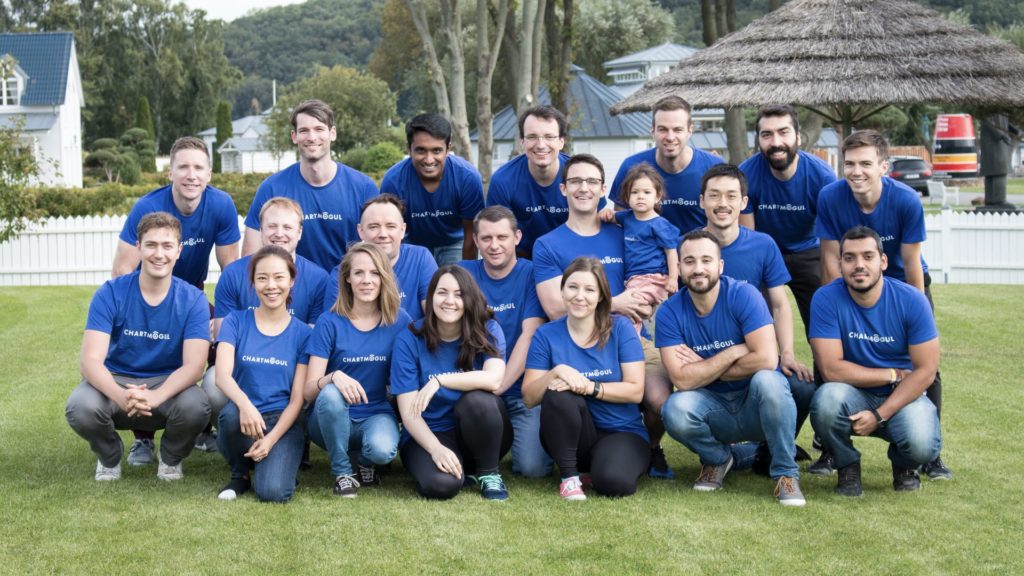
This is ChartMogul! We’re about 25 people and one Dachshund, headquartered in Berlin, Germany.
I joined ChartMogul as the company’s first full-time hire, to build out the company’s content strategy. My background is in Product and Engineering, so I started out without much of an idea what that meant.
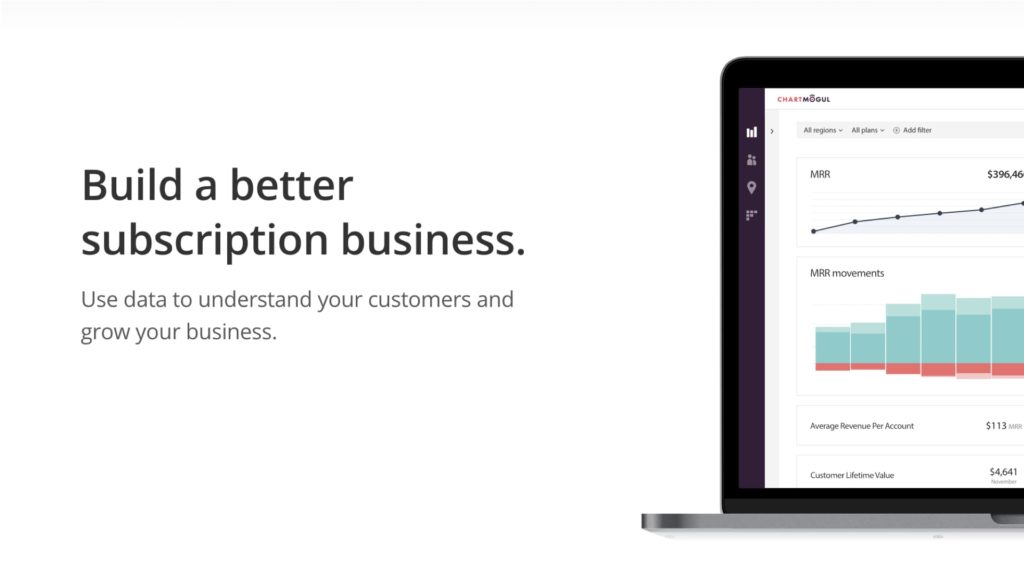
This is our product vision.
At ChartMogul, we want to help you build a better subscription business. This hasn’t really changed in the three years for which we’ve existed.
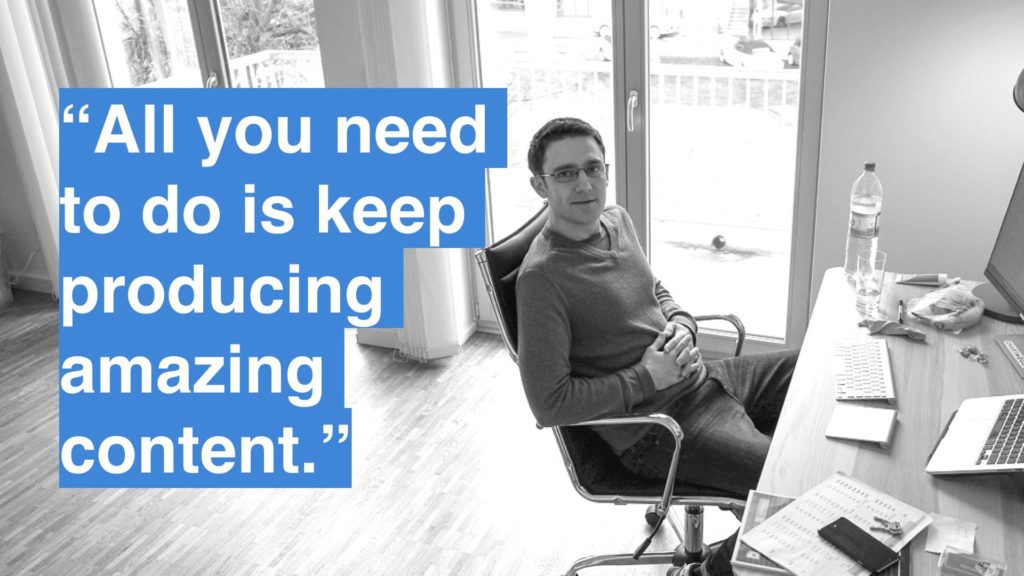
So on day one of ChartMogul for me, we moved into our first office (or rather, room in an office). And I was looking for some guidance on how to move forwards with our Content strategy. I got this line from our Founder, Nick, which I didn’t think was particularly useful at the time…

…and I was like ‘huh?’ What does that even mean?
I really needed some practical advice on how to get started from scratch.
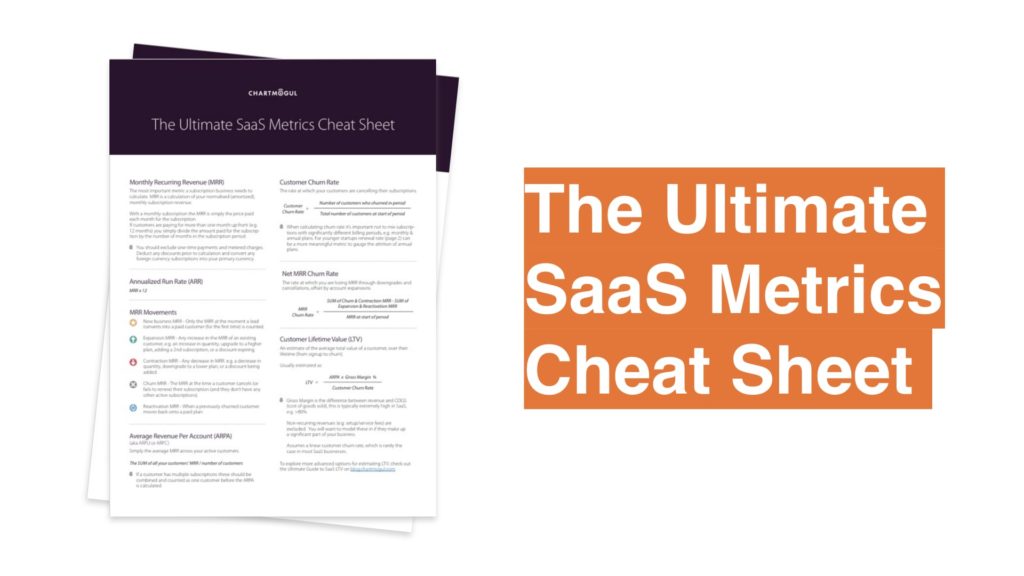
…Well, not quite from scratch. You see, there was already this.
The Ultimate SaaS Metrics Cheat Sheet. Designed to simplify many of the complex metrics that exist in the SaaS space, and present them in a beautiful printable reference.
Our Founder Nick had created this from a brainwave of an idea, and it was a big success. But other than gut feeling, we didn’t really know why. So my first steps were to try and deconstruct the success of this, to understand how we could replicate it in the future.
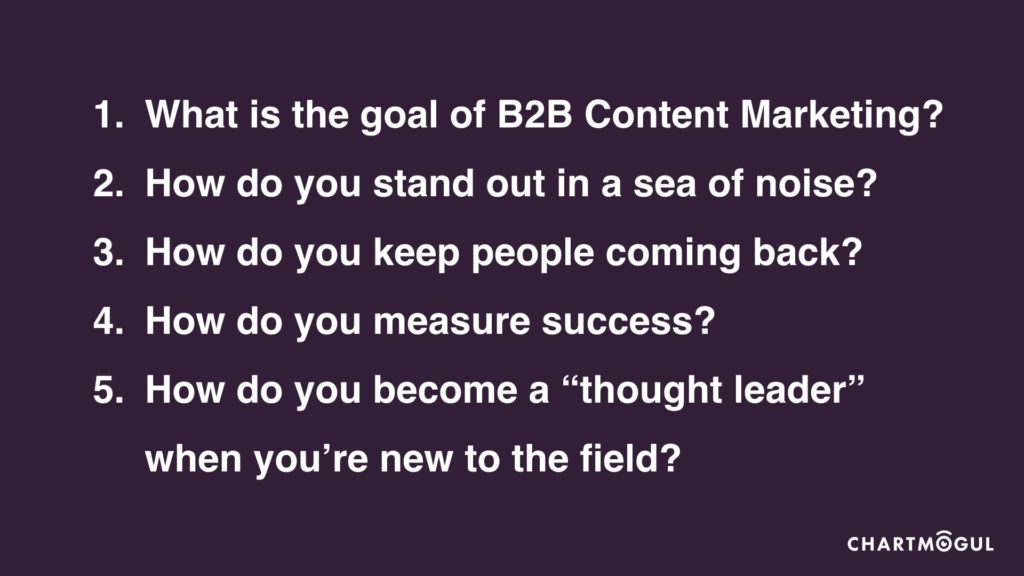
So there were these five, big, existential questions we had back then. And we’ve learned a lot about most of them in the last two years — I want to take you through what we’ve learned building an audience for ChartMogul. And I’m going to start with number five.
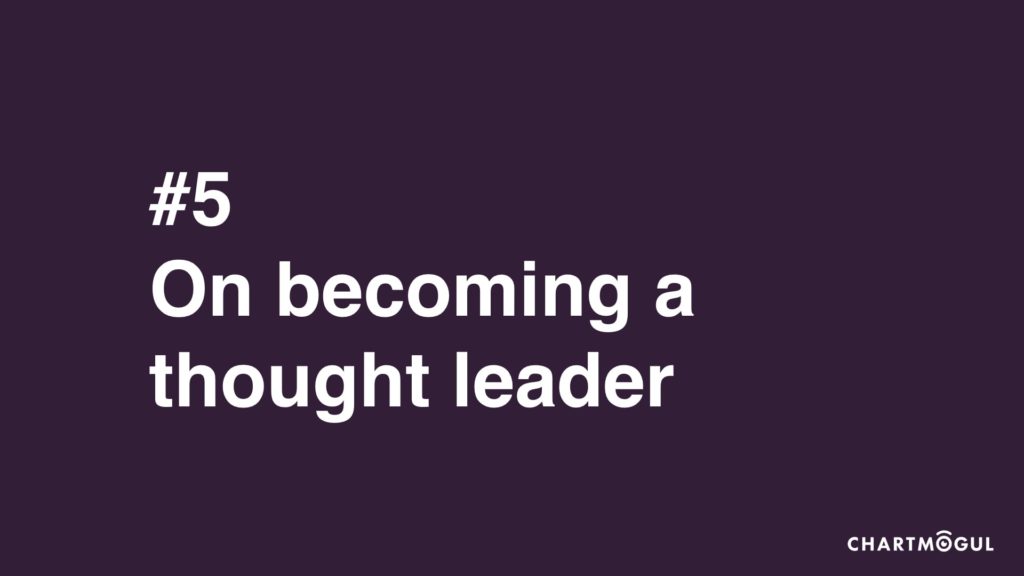
How do you become a thought leader in a particular space, when you’re just starting out and don’t have the knowledge you need to be an expert?

The one thing we were blessed with at ChartMogul in the early days was a variety of interesting, vibrant customers who are all solving compelling problems in their space. They all have a story to tell, and in most cases they had far more experience and authority than we did.
So the biggest decision we made here was to embrace those customers, and tell their stories and share their expertise rather than our own.
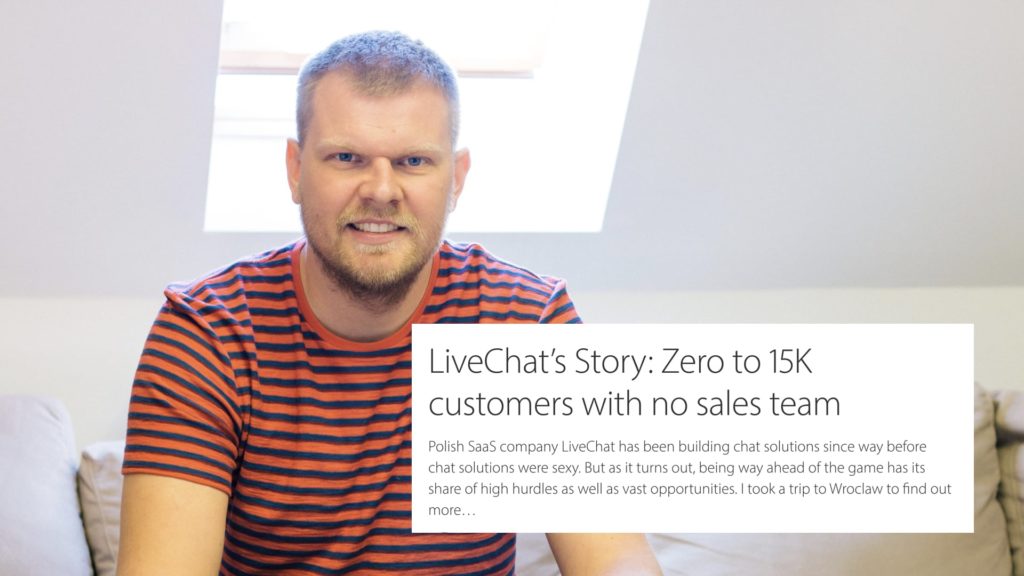
We invested in some rich, detailed customer stories which shared untold stories of SaaS companies like LiveChat. There were so many things these folks had learned in building their own business that was interesting and useful to our own audience.
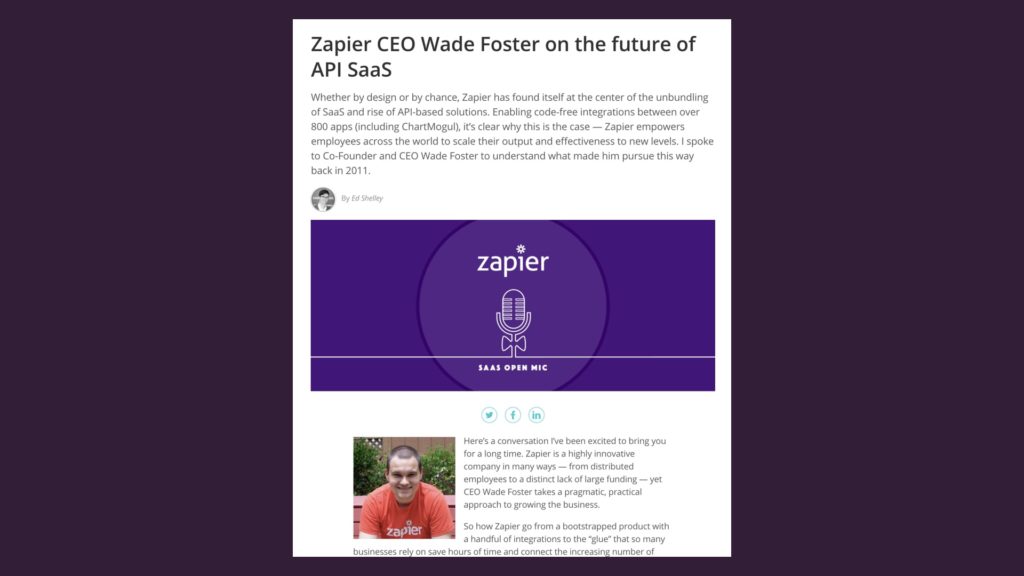
We produced SaaS Open Mic, a podcast interview series with SaaS founders and thought leaders, to tell the more personal aspect of their stories.
Clearly you need to put the work in and build your own ideas, thinking and strategy, but this helped us build a brand in the early days, before we really had any expertise in SaaS.
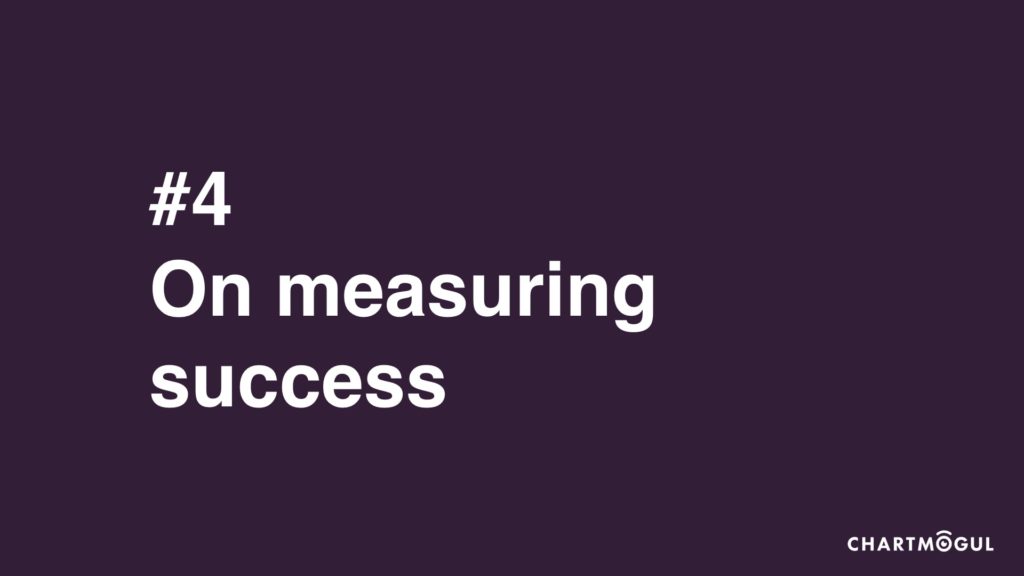
Perhaps the question I’ve been asked the most on Content: How do you measure the success of your work? How do you know your significant investment is worthwhile?
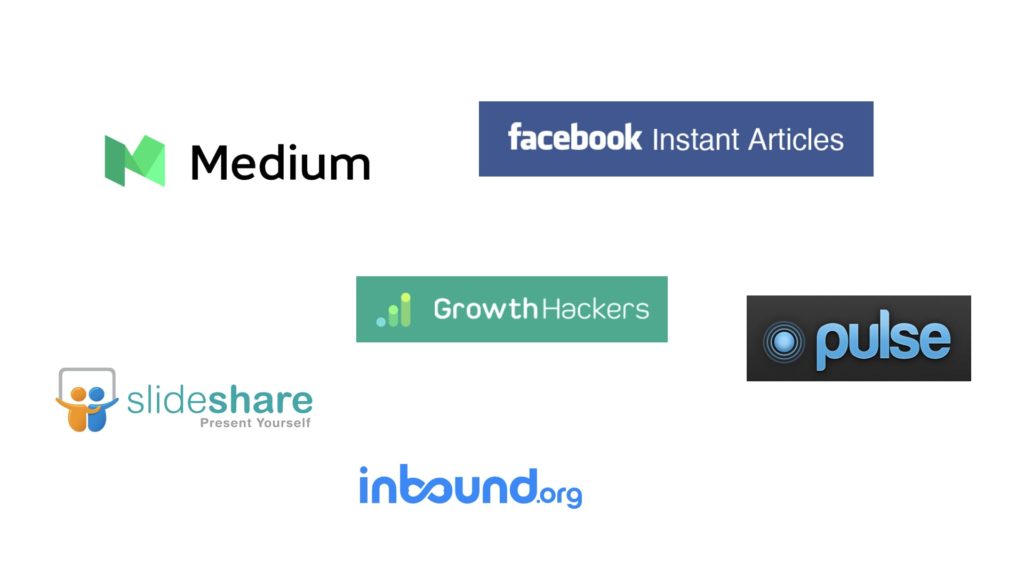
One huge problem here is that every platform we’re expected to publish and share to has its own definition of success. Upvotes, likes, shares, hearts… even claps(?!)
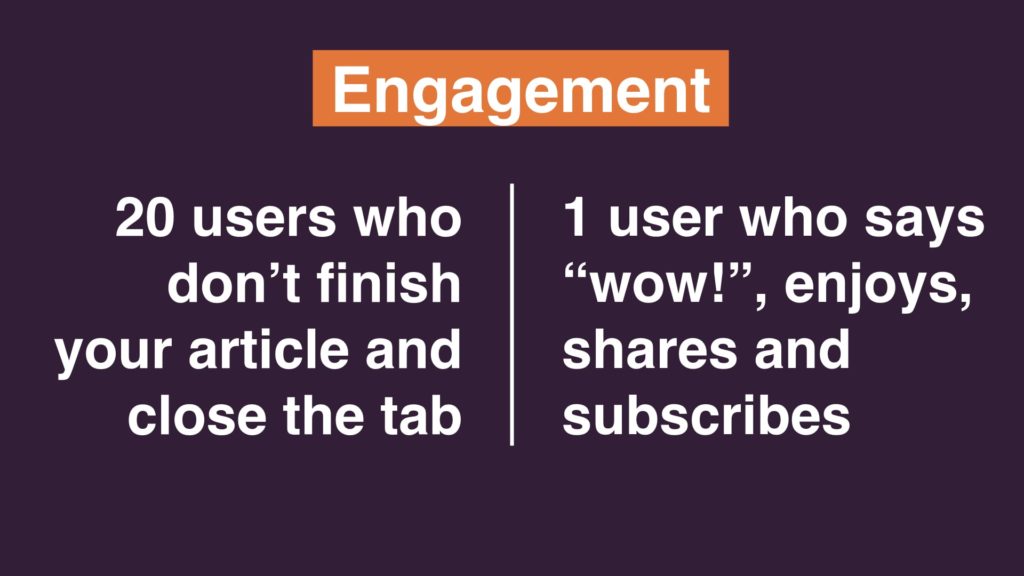
But if you ignore the “advice” for a second, which one of these examples would you prefer to have? I know my answer.

For us, our compass metric in Content is engagement. Why? Because regardless of how much traffic or views your content gets, engagement is a leading indicator of success. Pageviews are almost always skewed, but engagement metrics such as share rate are an indication that what you’re publishing resonates with your audience.

…but, a word of warning: If you’re going to measure an engagement metric like “shares”, make sure you measure properly!
For months we were measuring the percentage of users clicking the share widget on our blog. Turns out that represents less than 3% of the total shares. Oops.
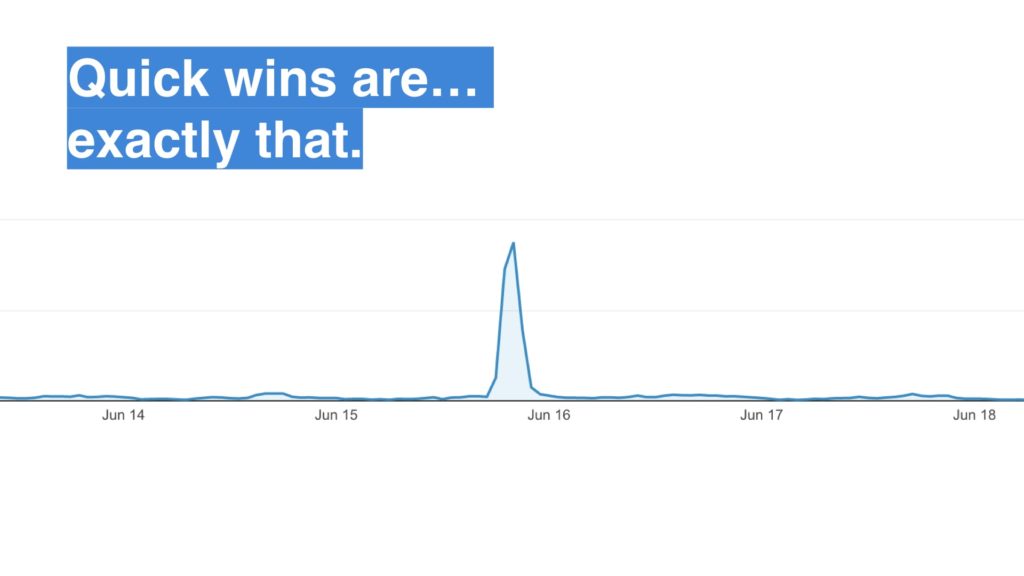
With this focus on engagement, you can stop chasing the “quick wins”, that might bring short spikes of attention, but absolutely nothing in the longer term…
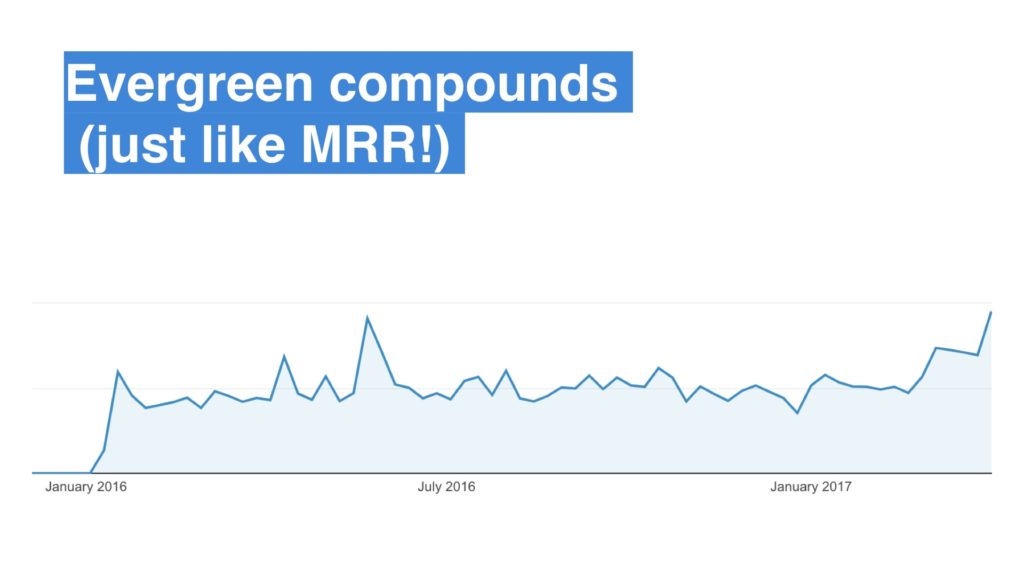
…and start focusing on engaging, evergreen content that compounds. This data represents a single article. Imagine adding another one of these every couple of weeks!
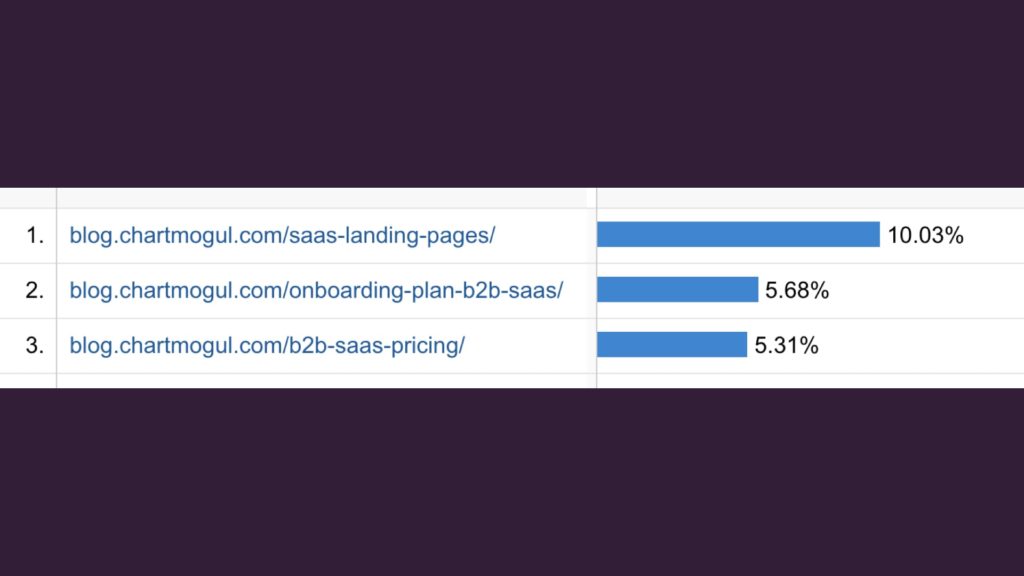
Another argument for evergreen: These are the top posts on our blog right now.
They are all over 1 year old(!)

It’s like a huge, heavy wheel that you’re trying to get moving. In the beginning you’re putting in all this effort — far more than feels reasonable — and seeing hardly anything in terms of results. The wheel hardly moves.
But when you finally start to pick up some speed, this thing has a huge amount of momentum and impact. And it’s very hard to stop!

We have “big wheel” projects. Our podcast didn’t see much in the way of initial success. In fact, by most standards we probably should have killed it.
But we proceeded to put energy into it, more out of a “gut feeling” that it’s the right thing to do than anything else.

But that does raise the question — when should you give up on these projects that are driven by gut feeling?
We’re still trying to answer this. But measuring engagement has been a nice way to see early indicators of success in projects that take time to grow. We saw great engagement in the podcast in the early days, and amazing feedback.
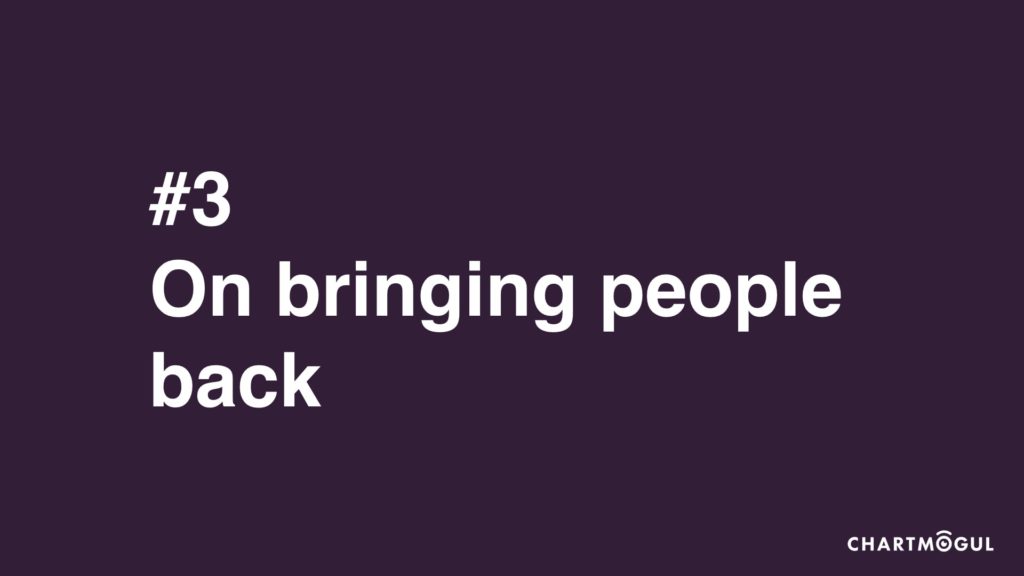
How do you bring people back to your content, rather than stopping by once?
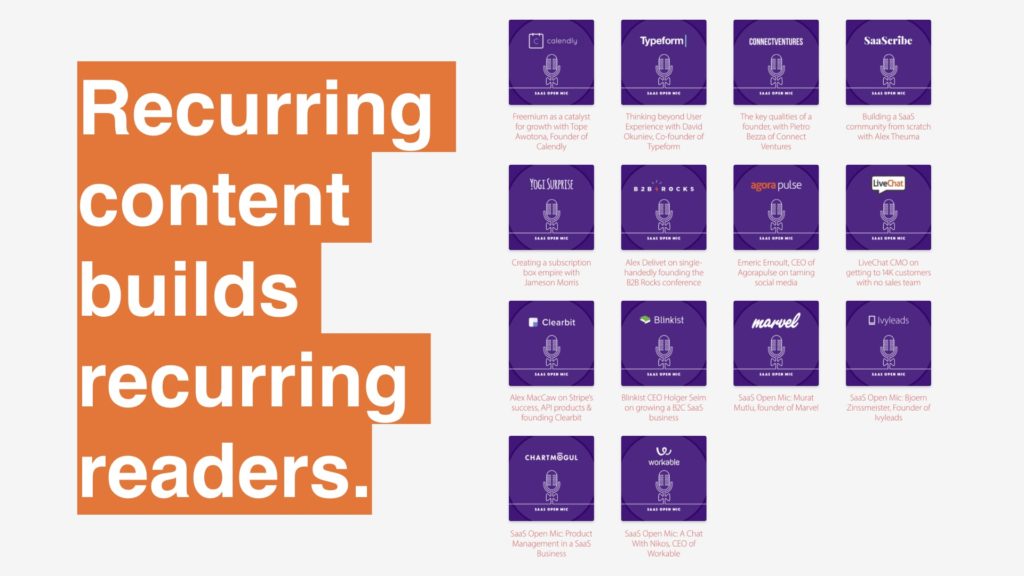
One key answer to this has been recurring content. Our brains are wired to love routine. People love to get into a routine with a regular series — like a weekly article, for example. They build this expectation, which reinforces a positive sentiment every single time they come back and you have something new for them.
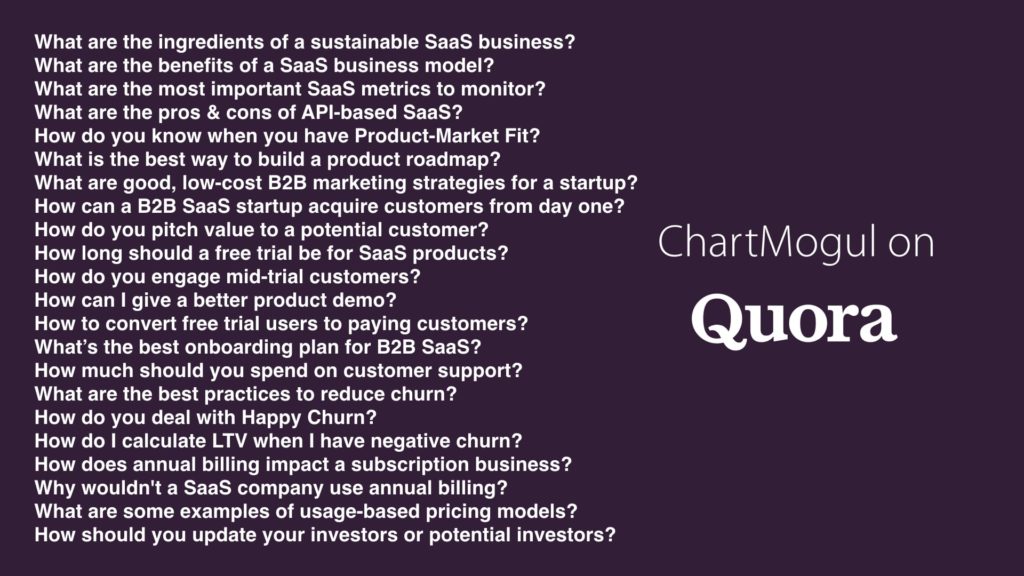
Quora has been huge for us. We built a series based on SaaS questions on the platform.

Today, Quora is the #1 referrer to the ChartMogul blog. Huge success, and we’re not even putting any new focus there at the moment.

In today’s world, you need to push things to your audience, with permission.
We’ve built a weekly newsletter series that people love — and they’ve given us permission to deliver it right to them every Friday. The permission part is important here, but making things as easy as possible for people by pushing things to them is key.
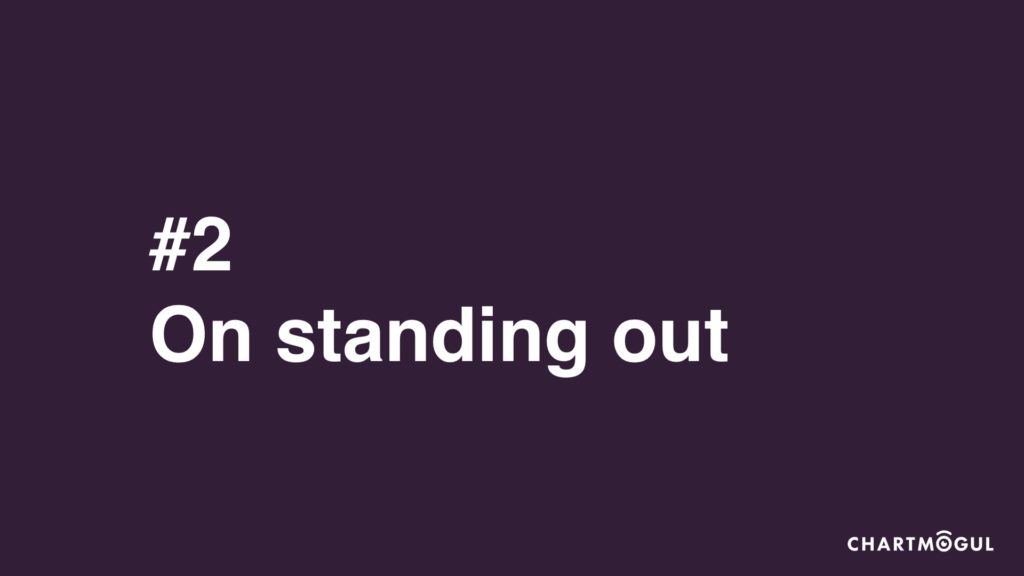
How do you stand from the ocean of noise in your space? Everyone is blogging, publishing, shouting as loud as possible. How do you cut through that?
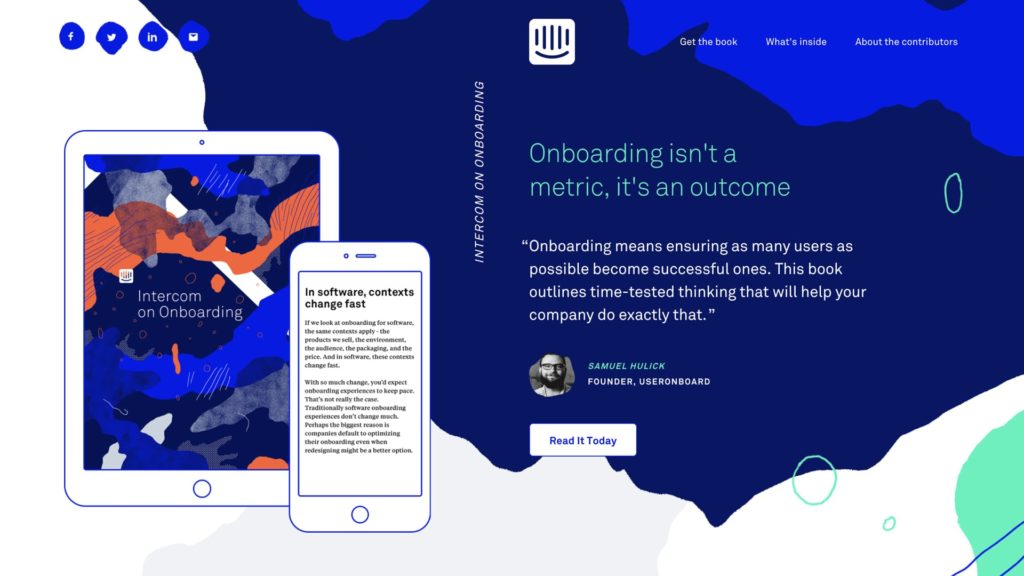
Finding role models can really help your focus. We found the people that were doing an incredible job in our space of building outstanding, high-quality content.
One of those is Intercom. We may never be able to match their editorial team and resources, but aspiring to their bar for quality helps give us direction and differentiate us.

We think of Typeform as a role model too. This Star Wars guide to Net Promoter Score blew me away. Think how many articles on NPS exist out there — this one is 20x more memorable than any of them. We aspire to this.

So we went out and did our own work, driven by curiosity.
This was a piece I worked on after spending some time in China, where I wondered how the SaaS scene looked. So I spoke to some people, did some research and wrote up my findings.
There are no metrics or obvious quantitative factors that would have led us to do this article. It’s purely driven by curiosity.
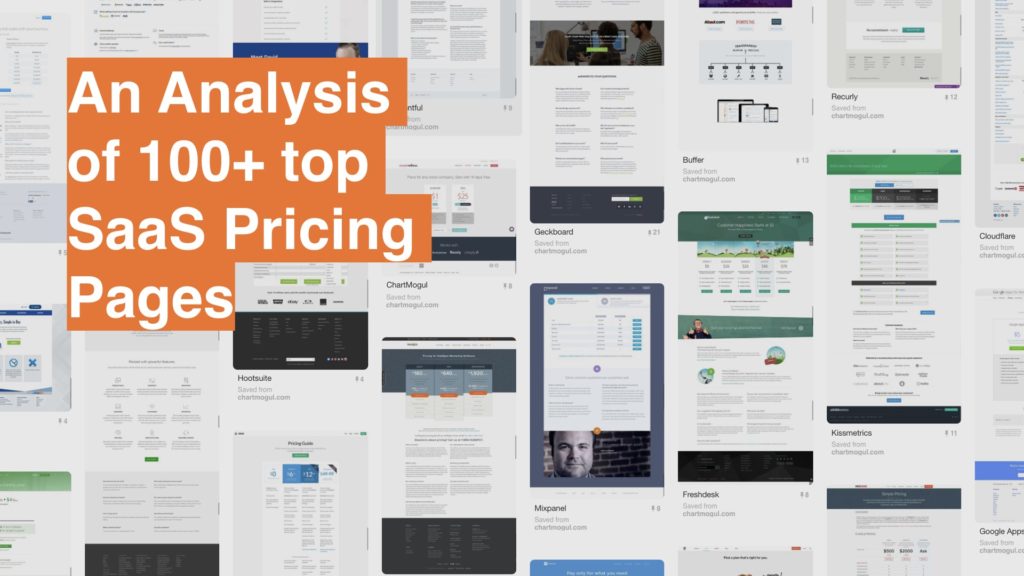
Again, with this analysis we invested a huge amount of effort into the research and quality of the information. It was a massive undertaking such a small team as ours. But this is now the most successful post ever for us. We created a “wow” factor, such that people couldn’t ignore our work.

So that leaves us with one remaining question, that I didn’t really have much of an answer to until recently.
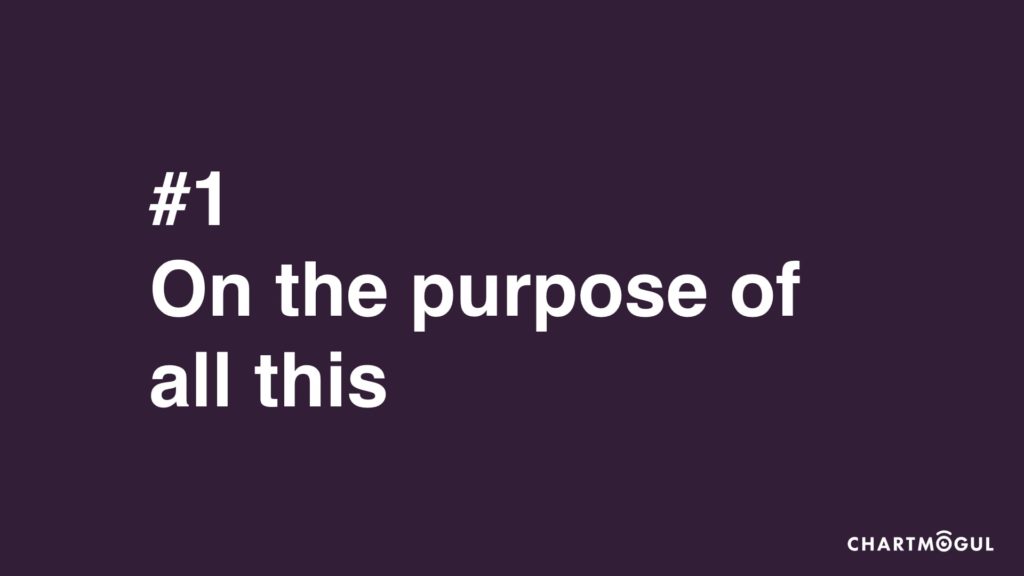
Why do we do this? What’s the purpose of Content for us?
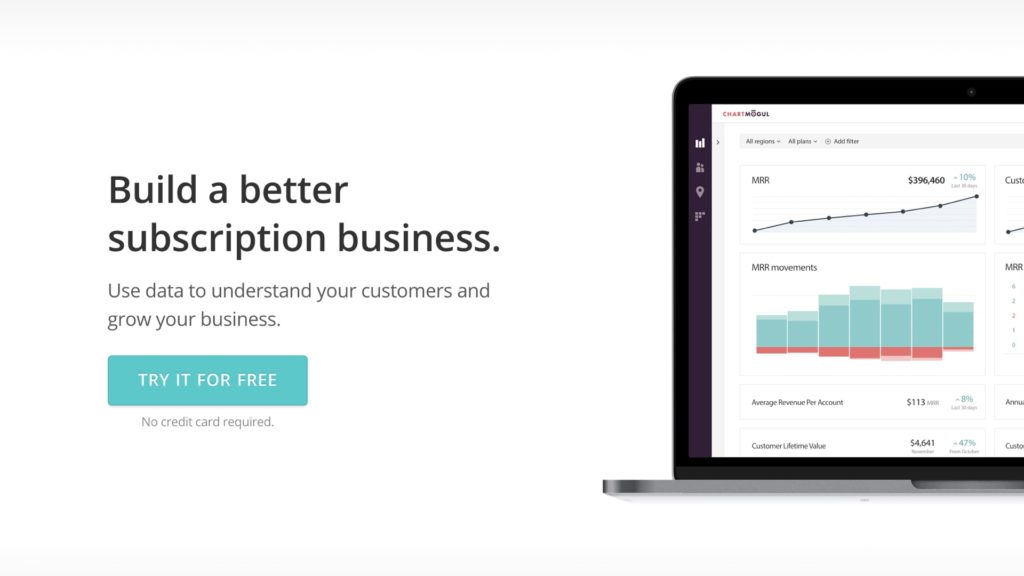
And what I realized is that to think about this, it makes sense to go back here — to our product.
As I mentioned earlier, the goal of ChartMogul is to help people build a better subscription business.

But why can’t this also be the goal for our content?
Isn’t it natural that these two things should be aligned?

When we’re producing all of these resources and educational tools, aren’t we just helping people build a better subscription business?
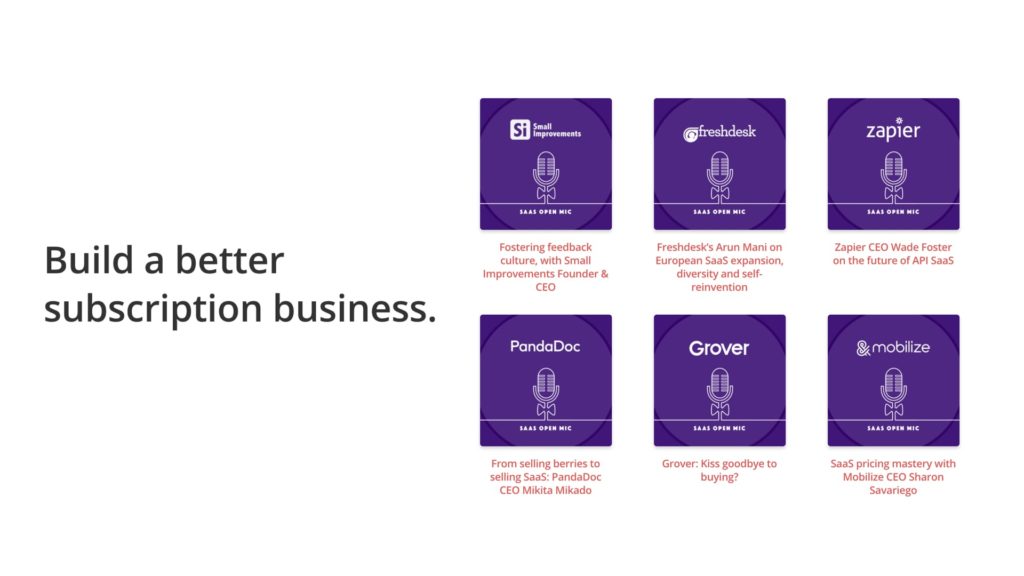
And when we’re interviewing founders, and telling the stories of our customers, aren’t we also helping people build a better subscription business?
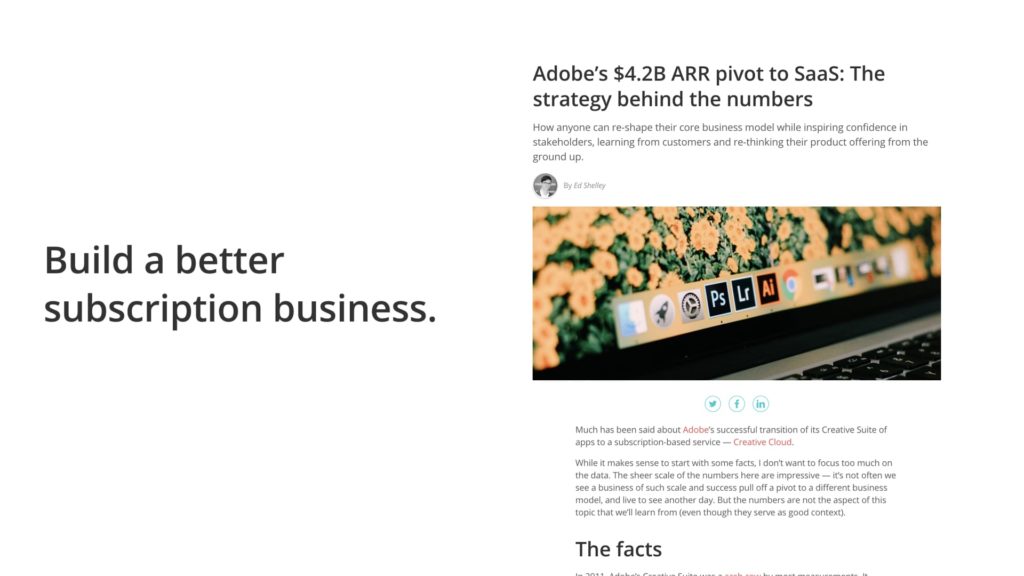
And isn’t our industry-focused analysis helping people build a better subscription business?

Our Content team is driven by curiosity. This quote from Matt sums up our attitude towards the work we do.
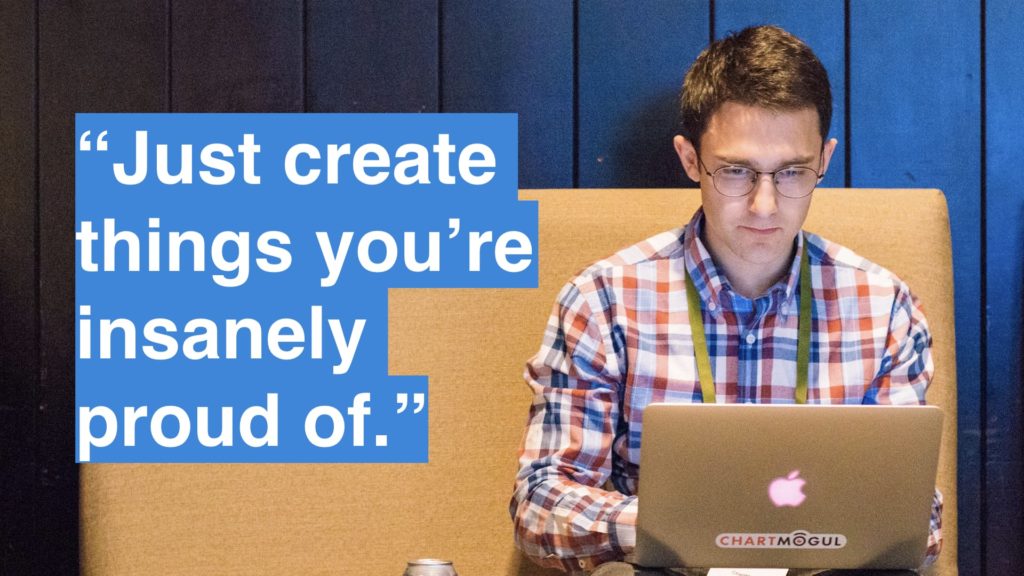
And finally, our fall-back when we’re lacking direction of clarification in the data or feedback we get, this the direction from our Founder, Nick. He told me to:
“Just create things you’re insanely proud of.”
And that might not seem so useful at first – it didn’t to me – but when you’re lacking clarity, or need to check that the work you’re doing is leading you in the right direction, it’s the most reliable metric you can have.
